The internet is full of rumours, but what appear to be rumours on World War 3 are fast catching up with Western mainstream media. More and more reputable news media have started writing about World War 3, after excessive coverage of Trump-VS-Clinton campaign, which goes to show that such war mongering could become a reality.
The clearest warning of World War 3 came from none other than superpower United States, when Major General William Hix said – “A conventional conflict in the near future will be extremely lethal and fast, and we will not own the stopwatch. The speed of events is likely to strain our human abilities.”

Speaking on a future-of-the-army panel in Washington recently, Hix warned that the US is preparing for “violence on the scale that the U.S. Army has not seen since Korea” when over 30,000 American troops were slaughtered. His comments were echoed by Lt Gen Joseph Anderson and Chief of Staff Gen Mark A Milley who described war between nation states as “almost guaranteed”.
Interestingly, some ordinary Americans have little knowledge of the present tension between their country and Russia. Even if they knew about it, they thought there should be Cold War 2 first, before World War 3 can happen. Most Americans simply assume that their country will never fight a war with Russia, and if for some reason they did, they would win easily.

Thanks to Hollywood and effective propaganda machines, most Americans are accustomed to thinking that they have such an overwhelming strategic nuclear arsenal that nobody would ever dare mess with them. It was true at one time, but not anymore. According to U.S. Department of State, Russia has hundreds more nuclear warheads deployed than the United States.
America’s missile submarines, nuclear-capable heavy bombers, and land-based intercontinental ballistic missiles are armed with just 1,367 warheads. Russia, on the other hand, possesses 1,796 warheads – 429 weapons more than the U.S. and 246 more than the limit of 1,550 that Moscow and Washington agreed to as part of the 2011 New Strategic Arms Reduction Treaty.
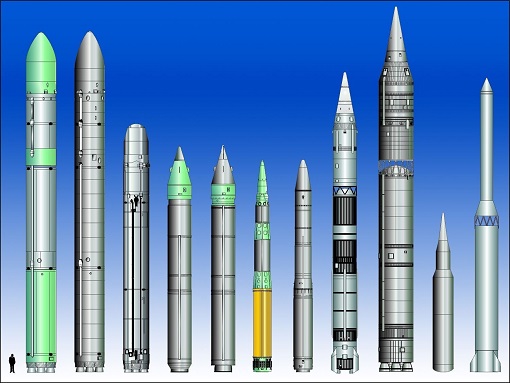
But warheads are just useless junks if they couldn’t be unleashed to kill. And the numbers – regardless of hundreds or thousands in possession – are equally useless if they couldn’t reach the target. So, it isn’t just the number of warheads that the U.S. needs to be concerned about in a war with Russia, or China for that matter.
Basically, there’re 3 super weapons that Russia possesses which is giving nightmares to the United States. First of all, meet “Sarmat”, a brand new intercontinental ballistic missile (ICBM) developed by the Russian – designed specifically to overcome U.S. Prompt Global Strike (PGS) and ballistic missile defences using a combination of decoys, a host of countermeasures and sheer speed.
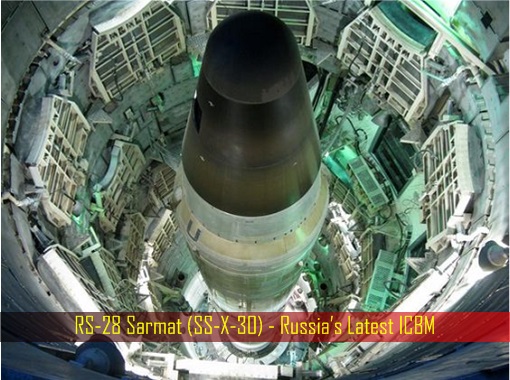
Scheduled to replace the obsolete Voyevoda R-36M2 (SS-18 Satan) ICBM, the RS-28 Sarmat (SS-X-30) heavy liquid-propelled ICBM weigh at least 100-tons and carry a 10-ton payload. With a range of at least 6,000 miles, Sarmat is the largest ICBM ever built. There’s no way that the U.S. could stop the Sarmat, thanks to its outdated LGM-30G Minuteman III currently in service.
U.S. Air Force officials have testified before Congress that the elderly Minuteman III is not likely to be able to provide assured deterrence. While the U.S. Air Force has started preliminary work on the development of a new Ground Based Strategic Deterrent (GBSD), experts believe whatever new missile emerges out of the GBSD is not likely to be as large and sophisticated as the Russian weapon.

Theoretically, once the Sarmat is launched, the U.S. is defenceless as the ICBM carries 15 independently targeted warheads. Essentially, for each missile that goes up from Russia, 15 warheads come down on United States. Every one of those warheads can be directed to a different city, therefore, one Sarmat missile could essentially destroy an area approximately the size of Texas.
There is no force patrolling the world’s oceans more powerful than the mighty U.S. Navy. Washington’s nuclear-powered attack and ballistic submarines, aircraft carriers, destroyers, frigates and whatnot are superbly awesome. That is why the U.S. needs to just send a destroyer to South China Sea to make China nervous and goes bonkers.

However, all those are vulnerable to a deadly weapon which comes from under the sea – “stealth” submarines. Russia’s new Lada-class diesel-electric submarines are the second deadly weapon that the U.S. Navy is extremely terrified of. The new Russian vessels are even stealthier than its own Kilo-class submarines – supposedly the quietest diesel-electric submarine classes in the world.
The U.S. Navy refers to Russian Kilo-class submarines as “black holes” for their ability to “disappear” from sonars. With the emergence of stealthier Lada-class (or Varshavyanka or St. Petersburg-class) new submarines which cleverly use a next-generation anti-reflective acoustic coating and a new improved hydro-acoustic system, it’s not hard to understand why the U.S. Navy is dead worried.
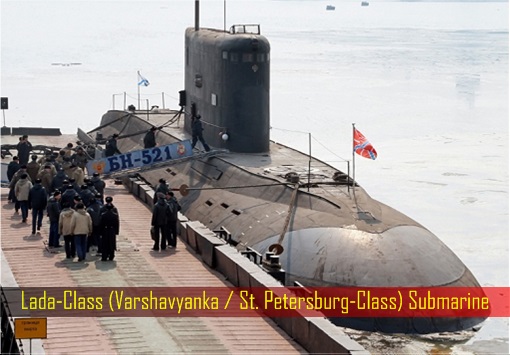
Here’s how deadly Russia’s new Lada-class diesel-electric submarines is. In 2006, a Chinese Song-class attack submarine, created with a mixture of Russian and Western technology and definitely not nearly as advanced as the Kilo-class (let alone Lada-class), tailed the Japan-based U.S. Navy aircraft carrier USS Kitty Hawk in the East China Sea near Okinawa “without being detected”.
In a war scenario, the Chinese diesel-powered attack submarine could have sunk USS Kitty Hawk with its wake-homing torpedoes and anti-ship cruise missiles. Now, imagine Russia deploying Kilo-class and Lada-class diesel-electric submarines to the United States – stealthy – and launch whatever weapons that they carry in a surprise attack.
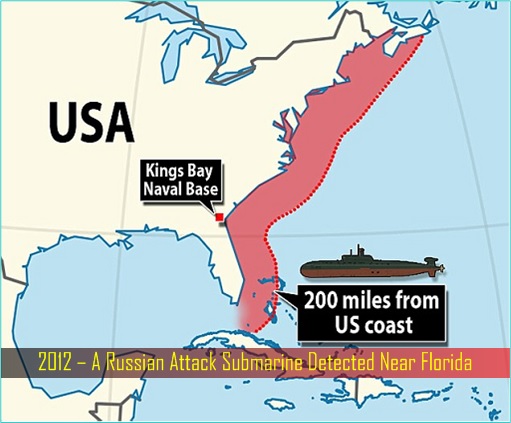
Sure, the U.S. may be able to send some missiles off at the Russians, as part of a surprise attack strategy. But the Russians also have the most advanced anti-ballistic missile systems in the entire world – the third deadly weapon. No, we’re not talking about five S-300 surface-to-air missile systems that the Russians had sold and deployed to Iran in a US$900 million deal recently.
And we’re certainly not talking about S-300V4 Gladiator advanced anti-missile and anti-aircraft system deployed to Syria to protect the Russian naval base along Syria’s Mediterranean coastal city of Tartus. When Moscow deployed “Triumf” S-400 SAM (better known to NATO as the SA-21 “Growler”) to Syria, the U.S. and Turkish Air Force immediately stopped sending fighter jets.
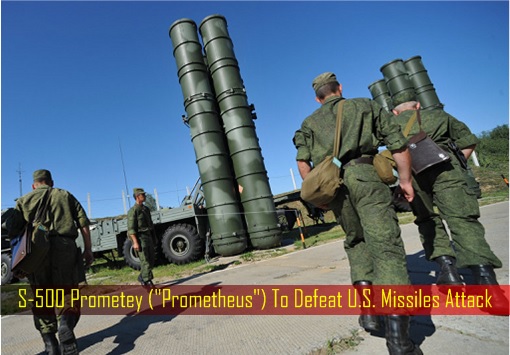
But even those toys were considered obsolete to the Russians. The latest gadget is the S-500 Prometey (“Prometheus”) – a long-range air defence and anti-ballistic missile system. Unlike the S-400, which can handle a maximum of 6 targets up to a range of 400 km with a 9 -10 second response time, the S-500 is capable of simultaneously engaging 10 ballistic missile targets out to 600 km with a 3 – 4 second response time.
The S-500 is not an upgrade of the S-400, but a new design, specifically to intercept ballistic missiles, AWACS and jamming aircraft. Able to hit targets at altitudes as high as 40 km, it has been reported that this air defence system can also target low orbital satellites. The plan was for the S-500 to shield Moscow and the regions around it – like a dome.
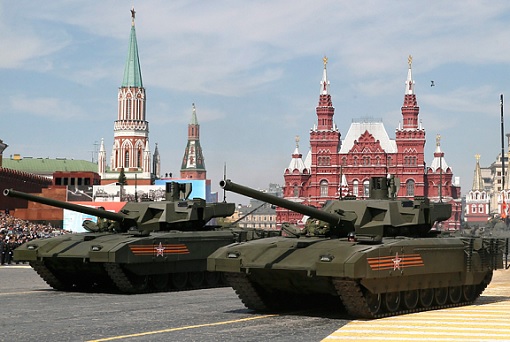
According to the S-500 design specification, the system can detect ballistic missile at a range of 2,000 km and warheads of ballistic missiles at a range of 1,300 km. It can defeat ballistic missiles before their warheads re-enter atmosphere, not to mention it can easily destroy ballistic missiles travelling at 5-7 kilometres per second.
This means Russia is safe in an intercontinental ballistic missile (ICBM) war with the United States, unless the U.S. has missiles which can travel faster than 5-7 kilometres per second. Currently, the fastest ICBM missile in the world is Russian-made RS-12M Topol (SS-25 Sickle), which Moscow had just launched from a Pacific Fleet submarine in the Sea of Okhotsk, north of Japan, as part of a drill.
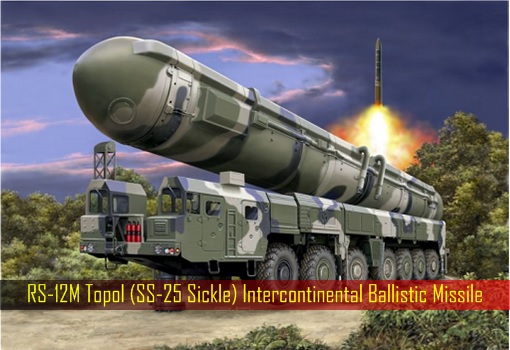
So, Russia owns the fastest ICBM missiles as well as the most advanced anti-ballistic missile system. In a nutshell, a Russian-made missile can destroy America but a U.S.-made missile isn’t guaranteed to do the same. If you think the S-500 is jaw-dropping fabulous, wait until you hear that the Russians are developing S-1000, possibly a modification of S-500.
More importantly, the Russia recognize the prospect of a World War 3 with the United States and had conducted a massive “civil defence drill” in Russia that involved 40 million people. If a nuclear war were to start, Russian citizens are going to have somewhere to go, but the same cannot be said about the Americans.

In the United States, no provision has been made for the general population in an event missiles start falling from the sky, at least not one which is made public. Sadly, most ordinary Americans aren’t paying attention to any of this. They still believe neither Russia nor China dares to attack them, no matter how much Washington intimates and provokes Moscow and Beijing.
Other Articles That May Interest You …
- Forget Syrian War, A Saudi-Iran War Could Spark World War 3
- Checkmate – Russia Sends New Weapon “S-300V4 Gladiator” To Syria
- “Battle Of Aleppo” – Russia Challenges U.S. To A War … If Obama Dares
- Bye U.S.!! – Here’s Why Genius Duterte Is Shifting Military Alliance To China-Russia
- “War Message” To Japan And US!! – China Sends 40 Fighter Jets & Bombers To Okinawa
- No, It Wasn’t An Accident!! – Here’s Why The U.S. Deliberately Bombed Syrian Forces
- Tactical Error – THAAD Deployment Means US-South Korea VS China-Russia
- Tribunal: No Basis To China’s South China Sea Claim, But Who Dares To Enforce It?
- Not Over Yet – Here’re Some Of Russia’s Awesome Military Hardware In Syria
- 4 Reasons Russia Intervened In Syria & Why Putin May Attack NATO As Well
- Russian Jet Shot Down – How Putin Brilliantly Turns It To His Advantage

|
|
October 17th, 2016 by financetwitter
|


|

|

|

|

|

|




























Comments
Add your comment now.
Leave a Reply